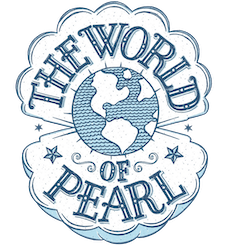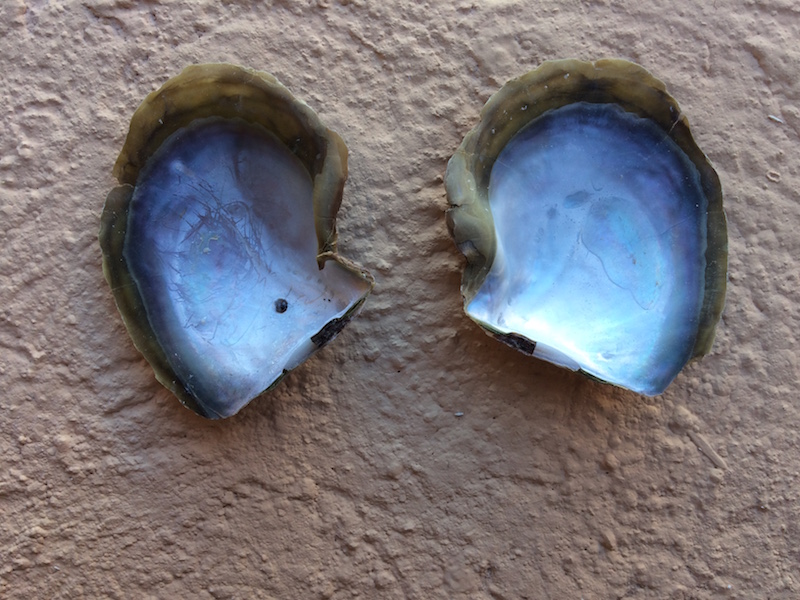Do you know about the first pearl farm on the planet? We all know about Mikimoto as the father of commercial cultured pearls. He basically made cultured pearls what they are today. But, today, as I sit staring at the waters of the Sea of Cortez, I understand that the Japanese pearl farm was not the very first. I get to look a lot closer to home to find the very first pearl farm. It was here in Mexico. (see image: The first pearl farm in the world was in La Paz, on the Baja peninsula in Mexico. The current Mexican pearl farm is in Guaymas, marked by the blue dot.)
 Which Came First?
Which Came First?
Just last night I wrote a post saying that the Japanese and Mexican had pearl farms at the same time. And they did, but, the Japanese farm did not come first. The Mexican pearl farm did. If you remember the Mikimoto timeline. In 1888 Mikimoto secured a loan to start his own culture pearl farm. On July 11, 1893, he had successful cultured his first pearl, a non-spherical (mabe) pearl. In 1896 he was granted a patent for culturing pearls and he opened his first boutique in 1899.
According to Douglas McLaurin Moreno et. al., Gastón Vivès founded the first pearl farm on the Baja California peninsula in the bay of La Paz before Mikimoto created his pearl farm. Furthermore, Douglas told me today that Mikimoto had a very experimental farm with a few employees and a low stock of oysters. Vivès worked with 8 million oysters and had about 800 employees. And his farm was a bit different…
A Natural Pearl Farm?

Gastón Vivès actually had a natural pearl farm. Remember pearls are either natural or cultured. A cultured pearl means the pearl forms because a human inserts a bead and mantle tissue into the soft body of the mollusk in order to spur it to create a pearl. A natural pearl forms by nature, typically due to an irritant or bacteria entering the mollusk body.
So, Mikimoto had a cultured pearl farm. He was experimenting with different processes of inserting irritants, beads, etc into the mollusk to essentially force it to make a pearl.
Vivès wanted pearls too, but he began his approach by experimenting with natural conditions that made it more likely to form a pearl. What waters, conditions, and locations in the sea were more likely to naturally produce a pearl? That is what Vivès wanted to know and he experimented with his findings.
La Paz
The La Paz farm started by Vivès harvested approximately 1.5 million pearl oysters (Pinctada mazatlanica) in each of the last three years of its operation (Cáceres-Martinez and Chávez-Villalba, 1997), 9–11% of which yielded natural pearls. This all came to an end in 1914 when the oysters and equipment were looted and destroyed as a result of the Mexican Revolution. So, the Mexican farm certainly did not prosper like the Japanese farm did.

The Mexicans proudly believe their farm was the first, even though it came to a devastating end. Vivès returned from exile a few years later and tried to revitalize the farm but he could never recover from the crushing weight of the destruction and the debt he had incurred.
Revival
He passed away in 1939, and a pearl farm operation wasn’t seen again until three grad students experimented with pearl farming in 1993-1994 and eventually opened Perlas del Mar de Cortez.
Vive las perlas mexicanas!
India
I am a modern day treasure hunter who travels the world for gorgeous pearls and amazing adventures. I own a pearl jewelry and jewelry repair business, ThePearlGirls.com, with a cute retail store in Athens, GA. I also have a Pearl Travel business and travel blog at TheWorldofPearl.com.



